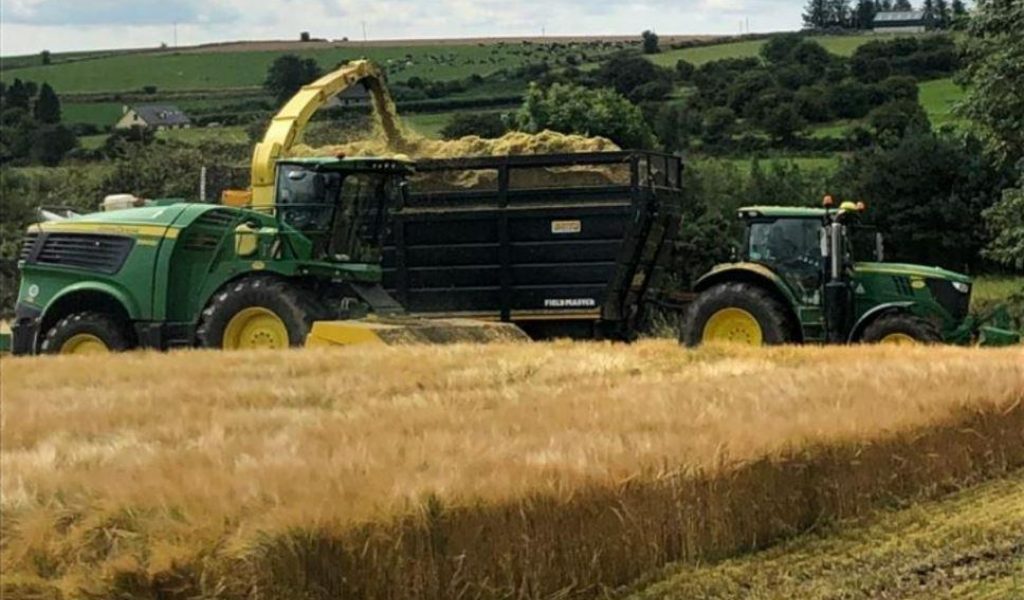Specialist Nutrition IE
Ballymountain, Waterford, X91 V6YR, Ireland
Specialist Nutrition IE
Ballymountain, Waterford, X91 V6YR, Ireland
Specialist Nutrition IE
Ballymountain, Waterford, X91 V6YR, Ireland

The Department of Agriculture’s Tillage Incentive Scheme has seen some farmers opt to grow cereal crops. While the traditional route for these crops would be over a weighbridge to a feed merchant, farmers should look at all options. With current high feed prices it may have a more valuable place on the farm as a wholecrop or crimp.
Before making any decision, an analysis of first cut silage should be taken to establish what you have already secured for feeding this winter. While most farmers will go on to harvest second and third cut grass silages, these cereal crops have a place in winter rations and should be considered.
When analysing grass silage, there are several key parameters measured which will help to identify the best use for the cereal crop in your winter diet.
A high quality, high protein first cut grass silage are generally produced at lower tonnages and as such, harvesting cereal as a wholecrop will help to both balance the diet and fill a potential forage gap.
A lower quality, high tonnage crop of grass silage is liable to show a lower energy level on analysis. In this instance crimp grain can bridge the energy gap, reducing the requirement for purchased concentrate feed.

- Wholecrop is a starch-rich forage crop, an excellent energy source and effective fibre, all essential for good rumen function.
- A flexible crop to grow, wholecrop can be produced from spring or winter crops and can be under-sown with grass seed as part of a reseeding plan. Wheat and barley are the most commonly ensiled cereals for wholecrop, however, it is also possible to use alternative crops such as oats, triticale or protein crops like peas and beans.
- Wholecrop cereals are a versatile addition to beef or dairy diets and can either be fed alone for buffering or as part of a TMR. From a nutritional perspective, wholecrop can be included at 25-50% of the forage in the diet and is suited to all groups of animals in a beef or dairy situation.
- Care must be taken to harvest at the optimum time for best results. Crops mature fast at this stage of growth so for best results the crop should be walked regularly to identify the optimum time for harvesting. The ideal time for this is when the grain has reached a “cheddar cheese like” consistency while the straw is still partially green. This enables you to harvest the crop with the straw in its most digestible form.
- A precision chop harvester is preferred for ensiling wholecrop. While mowing and picking up is an option, grain loss can be high resulting in a lower energy forage. Crops should be harvested between 35-45% dry matter, but as the crop becomes drier it can be more difficult to ensile.
- Good compaction is very important to aid the successful ensiling of wholecrop. Where possible it is advisable to cover the top of the pit with a layer of grass in order to create a seal and minimise the chances of bird and rodent damage.
- Wholecrop cereals must be treated with a crop-specific additive. MAGNIVA Platinum Wholecrop contains a patented combination of crop-specific bacteria and enzymes to achieve the best possible fermentation.
Contact Specialist Nutrition for expert nutritional advice or to learn more about the benefits of locally grown cereals and how they can be utilised on your farm.
Specialist Nutrition | Moist Feed and Forage Specialists
Call 051 833071 or contact Nigel 087 093 8170
